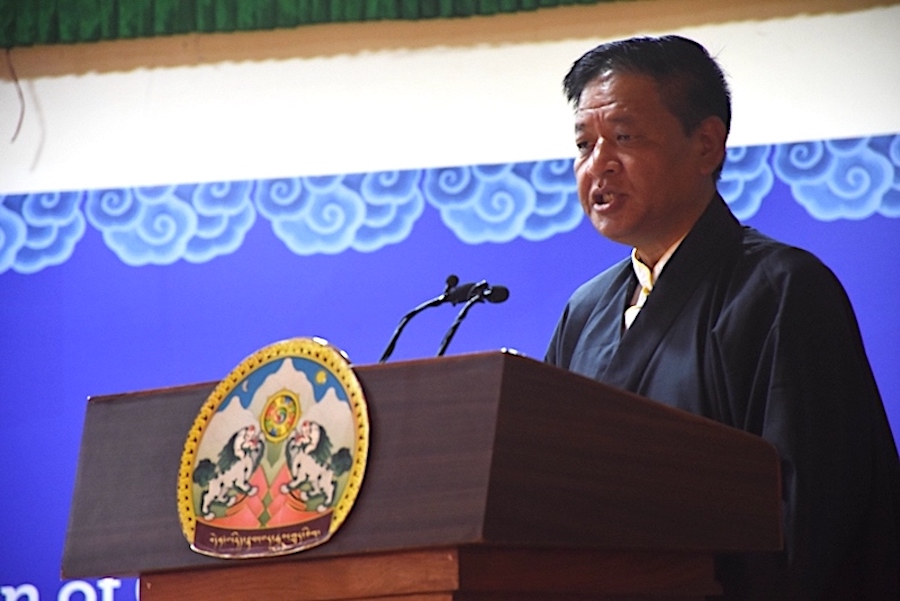Local Tibetans who live near Mount Kailash have been warned by the authorities not to speak about plans for a road around the sacred mountain, an important place of pilgrimage for Buddhists, Bon practitioners, Jains and Hindus. Surveying work for the road is reportedly now complete with markings on stones and posts to indicate the route, and construction may start next April. According to sources who have visited the area recently, many Tibetans are concerned about the plans for the road, which may be part of more ambitious aims to increase accessibility to the area and attract more Chinese and foreign tourists to Mount Kailash in Ngari (Chinese: Ali) prefecture in the Tibet Autonomous Region.
Tibetan yak herders, farmers and other local people who complained to officials in the area about the plans have been warned not to talk about the road to foreigners or others visiting Mt Kailash, according to a Westerner who has been a frequent visitor to the area for more than a decade. ‘Tibetans described this road to me as a “catastrophe”,’ said the Westerner. ‘They are concerned because Kailash, known to Tibetans as Kang Rinpoche, is such a sacred place and the landscape is so unspoilt. The whole point of the pilgrimage is to make the arduous 56-kilometre circuit around the mountain on foot.’ It is not clear whether plans for the road are mainly a local initiative by the Ngari prefectural authorities or whether there is more high-level backing for the project.
Construction of the road would be challenging due to the difficult physical conditions, remoteness of the region and high altitude terrain; the Dolma-la pass along the route reaches 5723 metres. Plans for the road may be linked to other aims of increasing access to the area; according to one source, there are ongoing discussions among the local authorities about opening up a tourist route by air from Lhasa to the town of Ali, approximately 250 km and a day’s drive north-west of Mt Kailash. In theory this could enable tourists to fly there from Lhasa in less than two hours, drive around the mountain, and be back in the capital a few days later. It normally takes at least three to four days to drive to Kailash from Lhasa. A Western tour operator who runs trips to Kailash said: ‘These plans do not take into account either the severe, and very real, risks of fatality from visiting this high altitude region without adequate acclimatization, nor do they take into account the sacred nature of the mountain to devotees from several faiths. The road would undeniably alter the whole nature of the kora (pilgrimage circuit). Tibetans relate to the mountain as though it is a god, and this palpable atmosphere of spiritual devotion makes doing the kora a very powerful experience, particularly during religious festivals. ’
Tibetans believe that by circumambulating Mt Kailash they are accumulating spiritual merit. The Western tourist said: ‘Tibetans joke about Hindus who make the journey around the outer kora by yak, saying that this is a holy experience for the yak but not for the pilgrim. In the same way, Tibetans believe that no one would accumulate merit by driving round Kailash.’
Mt Kailash, which is the source of four of Asia’s major rivers including the Brahmaputra in India, is known to Tibetans as ‘precious jewel of the snows’ and to Hindus as the abode of the god Shiva. Most Tibetans complete the pilgrimage circuit in one day, starting at dawn, while Western tourists generally take between three to five days to do the kora. An increasing number of Chinese tourists are becoming interested in religious pilgrimages and are visiting Kailash.
This is one in a series of reports by Kate Saunders commissioned by the Australia Tibet Council, Free Tibet Campaign and the International Campaign for Tibet. These reports are also issued on the TSG-Lists, an international posting for Tibet supporters and on World Tibet News, a compilation of news on Tibet archived at: http://www.tibet.ca/wtnnews.htm and on http://www.phayul.com









